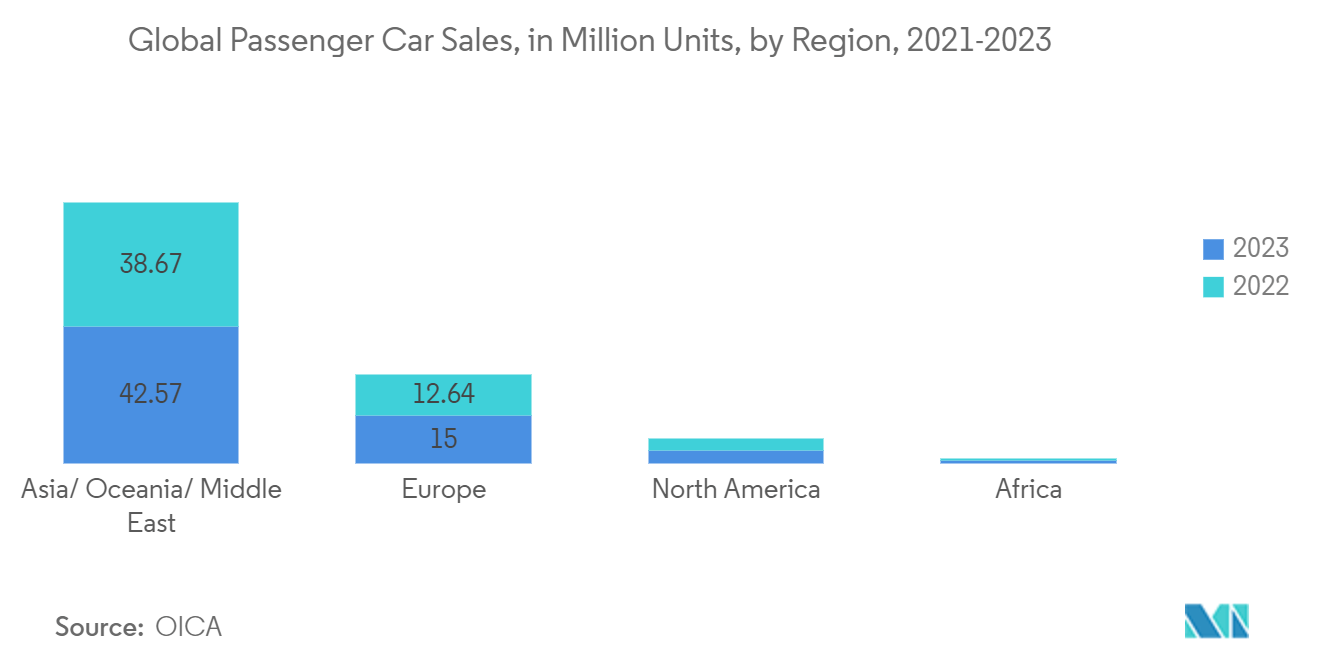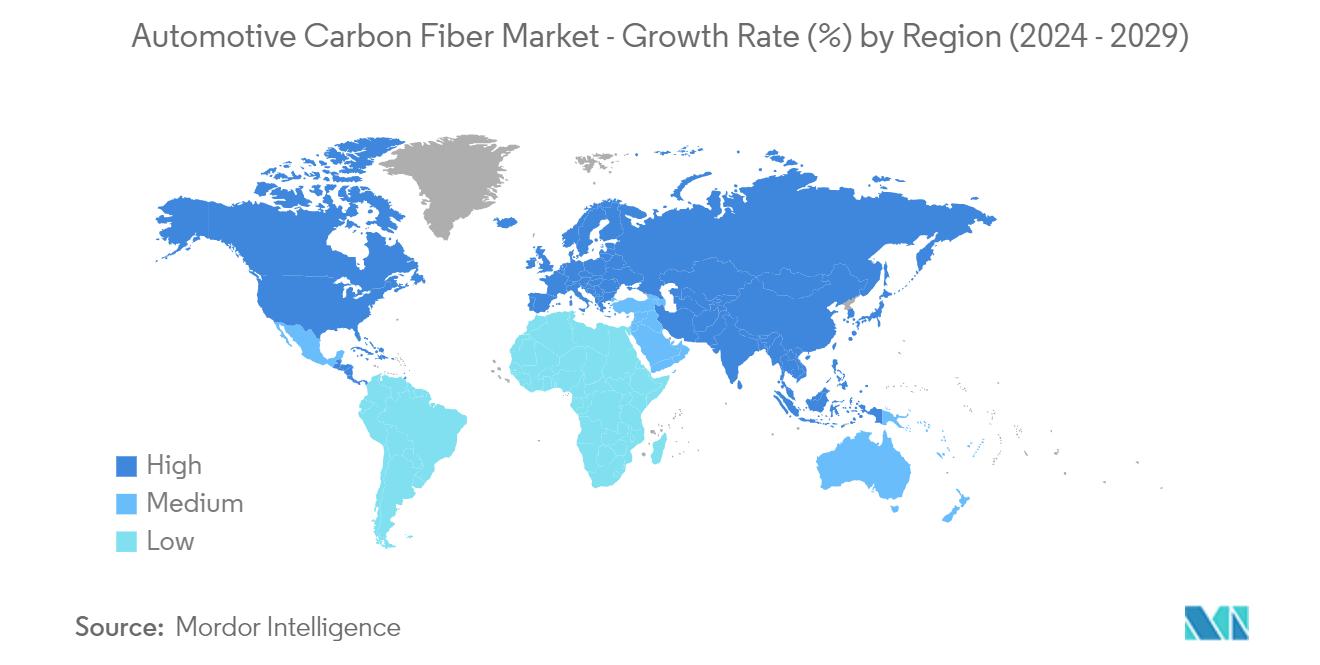Market Trends of Automotive Carbon Fiber Composites Industry
The Passenger Car Segment Holds a Major Market Share
The rise in passenger vehicle sales has been in line with an increase in consumers' disposable incomes and buying capacities across the world. Further, the increase in vehicle electrification is likely to enhance the demand for lightweight vehicles, which is likely to result in major growth for the market during the forecast period.
Advanced materials such as carbon fiber are essential for boosting the fuel economy of modern cars and maintaining performance and safety. Since it takes less energy to accelerate a lighter object than a heavier one, lightweight materials offer great potential for optimizing vehicle efficiency and fuel economy. A 10% reduction in the vehicle's weight can transpire to a 6-8% increase in fuel economy. In a typical automobile, fiber is 50% by volume while adding 10% to the weight.
Due to the growing concerns over environmental issues caused by the rise in exhaust emissions, there has been an increasing demand for high-performance electric vehicles. This has been further supported by the introduction of strict regulations regarding emissions and fuel economy, as well as government initiatives such as subsidies and incentives to encourage the adoption of electric vehicles. For example, the UK government has already declared plans to cut 68% of CO2 emissions by 2030 in a proposal to tackle climate change and announced a ban on gasoline and diesel cars from 2030.
The rise in demand for electric vehicles owing to the enactment of stringent emission norms globally is likely to witness an increase in the integration of lightweight parts fabricated from composite materials.
Major players across the world are investing in R&D to bring in innovative carbon fiber components to enhance vehicle efficiency. For instance,
- In October 2023, Mitsubishi Chemical Group and Honda Motor Company jointly developed polymethyl methacrylate, an acrylic resin material for automotive body parts. The new material will be used in vehicle doors, hoods, fenders, and other automotive body parts.
Considering these aforementioned factors and developments, the demand for highly efficient carbon fiber in passenger cars is anticipated to register high growth during the forecast period.

Asia-Pacific is Expected to Dominate the Market
Asia-Pacific is home to some of the world's largest automotive manufacturing countries, including China, Japan, India, and South Korea. In 2023, over 50 million units of motor vehicles were produced in Asia-Pacific, where China accounted for over 30 million units of vehicles, followed by Japan and India, respectively.
Many countries in Asia-Pacific have implemented stringent emissions regulations to combat air pollution and promote eco-friendly vehicles.
- In 2022, the China MEE EV Policy proposed a phase-out goal of a 50% share of EV sales for all vehicles by 2030 in "key polluting regions," indicating China's targeted approach to reducing vehicle emissions in areas most affected by air pollution.
These regulations have driven automakers to adopt lightweight materials like carbon fiber to reduce vehicle weight and improve fuel efficiency.
Moreover, several countries in Asia-Pacific, such as Japan and South Korea, have established a competitive advantage in the production and processing of carbon fiber. For example, Toray Industries, a Japanese company, is one of the world's largest producers of carbon fiber, with a global market share of over 30%. This strong manufacturing base has contributed to the growth of the automotive carbon fiber market in Asia-Pacific.
Thus, with the increasing focus on sustainable mobility, stringent emissions regulations, and the increasing demand for lightweight materials in the automotive industry, the Asia-Pacific is expected to dominate the automotive carbon fiber market during the forecast period.


